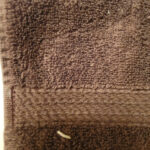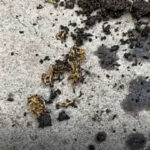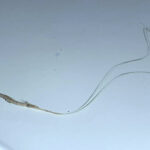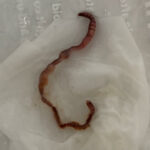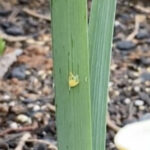The best worms to use for composting are red worms. Red worm is the common name for Eisenia fetida/foetida and Lumbricus rubellus. Red worms are a type of earthworm that is also commonly used as bait for fish such as perch and sunfish. Eisenia fetida/foetida (also called red wiggler, manure worm, or brandling) is commonly used for composting. While most people raise red worms for use in compost and for fish bait, unlike the silk worm, red worms can still be found in nature. They can be found in manure piles, decaying leaves, and in other organic material.
Red worms are productive breeders. They lay one egg capsule every seven days or so and each capsule hatches an average of three to four earthworms, although seven or even a dozen per capsule is not uncommon. Hatched earthworms typically grow into breeders in roughly three months. Red worms are hermaphroditic creatures, meaning, they have both male and female sex organs. Although these interesting creatures have both male and female sex organs, it still takes two to tango.
Although other types of worms can be used for composting, red worms are actually the best worms to use, so you will want to raise them well and keep them happy if you want them to reproduce quickly. To create the ideal conditions for red worm reproduction you should begin by gathering the following materials for feeding:
- Raw fruits and vegetables
- Fruit Peelings
- Eggshells (well-crushed)
- Bread and other grains
- A shallow container or bin (24″ X 18″ X 8″ should suffice) with a lid
For bedding, use shredded paper, cardboard, dead plants, newspaper or fall leaves, as well as straw. You can also buy commercial bedding. Keep your bedding nice and moist as worms need moisture to survive. To begin creating the perfect environment for your red worms, wash out the container or bin. If you have a wooden bin, line the bottom of it with sturdy plastic such as a heavy trash bag or shower curtain.
There are a number of rules to follow when feeding compost worms. It is important to avoid feeding bones, meat, fat, cheese or dairy, grass, twigs or wood, or any synthetic materials to your red worms. Mix the organic materials together and add the worms. It takes roughly 3-5 months for the worms to eat through the organic materials. At this time, you will notice very little materials and a hefty amount of compost. Once this happens, it’s time to harvest.
Harvesting means: do not add any food to the bin for two weeks. When two weeks has passed, simply move all of the worm bin contents to one side of the bin and remove any large pieces of undecomposed materials. Add fresh materials – leaves, fruits and vegetables, to the empty side of the bin. Over the next two weeks or so, the worms will begin to move to the side where the new materials are located, leaving their compost behind. All that is needed at this point is to remove the old compost and replace it with fresh materials. Cover the new side of the composting bin to encourage the worms to migrate to the new side.
When you are ready to use your fresh worm compost, you can use several methods of extraction, but one method in particular seems to be the most effective. Dump the entire contents of the bin onto a large sheet of plastic and make several piles. Once exposed to the light, the worms will quickly bury themselves in the bottom of the compost within 2-3 minutes. After a few minutes, remove the top layer of compost, leaving the worms on the bottom. Once you have removed all of the worm compost, simply collect the worms and return them to the composting bin.
Your red worm composting material is ready to use immediately or if you choose, you can store it for later use. Worm compost can be added directly into your potting soil or mixed in with your garden soil as a soil amendment. If you notice a worm or two in the compost, don’t be alarmed. This is fairly common. Worm compost use is not limited to outdoor gardening. You can also use red worm compost in the tops of your indoor plants. The odor is not offensive.
All About Worms is always free, always reader-supported. Your tips via CashApp, Venmo, or Paypal are appreciated! Receipts will come from ISIPP Publishing.




